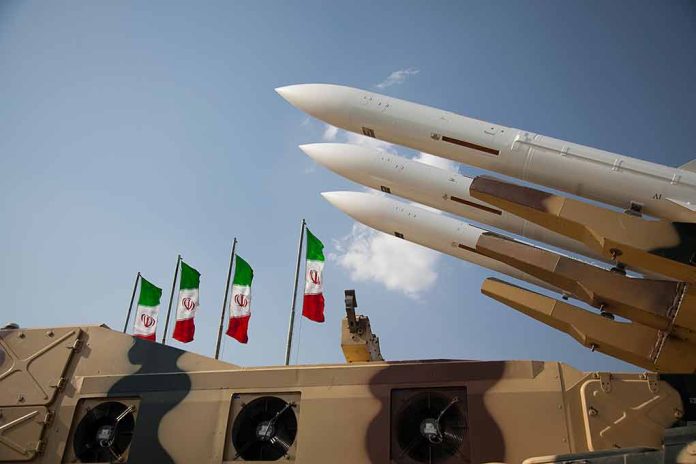
The introduction of Iran’s Qassem Basir missile, with its alleged ability to penetrate sophisticated U.S. and Israeli defenses, marks a potential shift in regional power dynamics.
Key Takeaways
- Iran unveiled a new solid-fueled ballistic missile named “Qassem Basir” with a reported range of 1,200 kilometers (approximately 745 miles).
- The missile display occurs amid tensions with the U.S. and Israel over Iran’s nuclear program and regional policies.
- Iran claims the missile can penetrate American-made THAAD defenses, but these capabilities are unverified by independent sources.
- Recent events suggest the missile could bypass defensive systems as seen with recent Houthi attacks.
- Israel and the U.S. have vowed strong responses to any potential attacks by Iran or its allies.
Unveiling of the Qassem Basir
The Iranian military recently showcased the Qassem Basir missile, boasting an impressive range of 1,200 kilometers. With solid-fuel propulsion, this marks a technological leap from the older Martyr Hajj Qassem missile. Tensions between Iran, the U.S., and Israel underscore the significance of this development. The missile reportedly surpasses previous systems in accuracy by integrating advanced electro-optical guidance technology.
Defense Minister Aziz Nasirzadeh emphasized the missile’s capability to target U.S. and Israeli sites if they act aggressively. “We have no hostility toward neighboring countries and seek brotherly relations, but in the event of an attack, U.S. bases in the region will be considered legitimate targets,” Nasirzadeh stated. Despite these assertions, the missile’s performance against sophisticated defense systems like the THAAD remains unproven.
BubbaNews:
Seeing reports that the Israeli Air Force is indicating that the American 🇺🇸 THAAD missile system missed the Houthis ballistic missile 🚀 today, allowing it to hit near the airport.Not a matter of if but WHEN Israel’s enemies see a breach in Israel’s air defense… pic.twitter.com/XiiQ2EgMnG
— Forgiven Messenger (@ForgivenMessen1) May 4, 2025
Implications of Recent Developments
Iran’s declaration coincides with recent missile activities by Houthi rebels, which challenge traditional defense mechanisms. Although many attacks were intercepted, some breached defenses, notably a missile near Israel’s Ben Gurion Airport. The success of such operations supports Iran’s claims but raises doubts due to past exaggerations of military prowess.
U.S. President Donald Trump remains firm in preventing Iran from becoming a nuclear power, preferring negotiations while not dismissing military solutions. Israeli authorities warned of decisive reactions to any provocations, underscoring the critical implications for regional security and diplomatic efforts.
Strengthening or Posturing?
Amid its unveiling, the Qassem Basir aims to project strength, potentially altering perceptions of Iran’s military capabilities. The recent missile tests suggest Iran’s intent to counter perceived threats and bolster its strategic position. However, external analysts highlight ongoing internal challenges within Iran, such as economic strains and anti-regime sentiments, casting doubts on the missile’s effectiveness in real-world scenarios. Iranian officials claim the missile’s resilience to electronic interference boosts reliability, yet without independent verification, the true impact remains speculative.
“Message to IRAN: We see your LETHAL support to The Houthis. We know exactly what you are doing,” Pete Hegseth recently wrote on X.
The global community, particularly the U.S. and Israel, continue to monitor these developments closely. Regardless, Iran’s willingness to advance missile technology amid scrutiny adds a layer of complexity to Middle Eastern geopolitics. The region’s stability remains precarious as diplomatic dialogue and potential escalations loom over the horizon.





